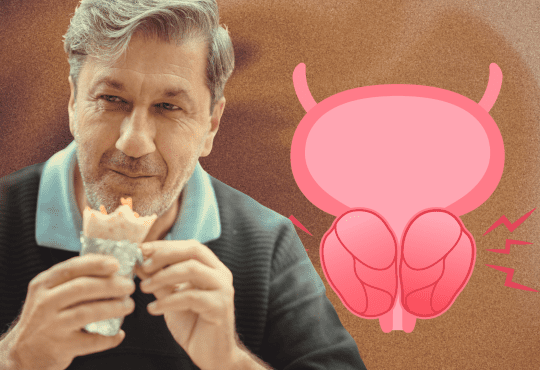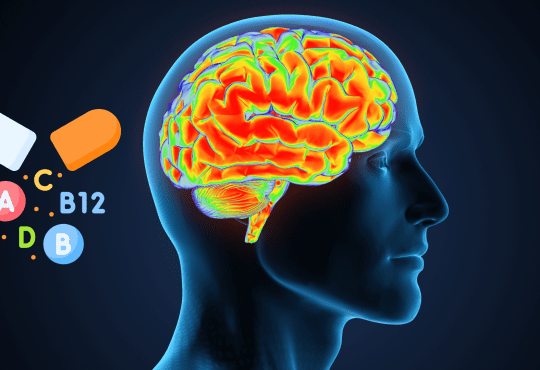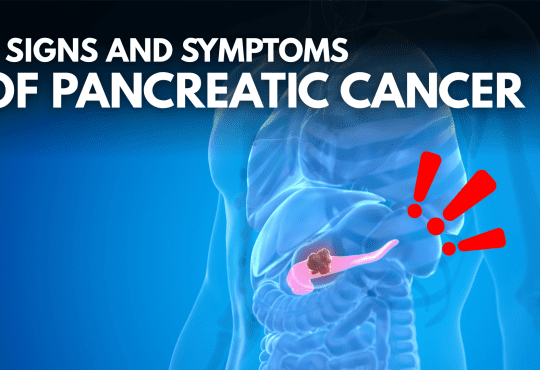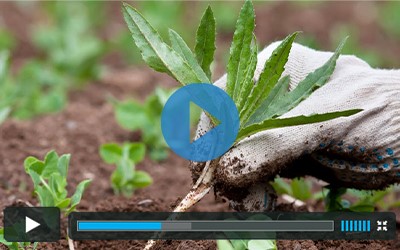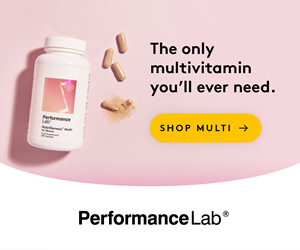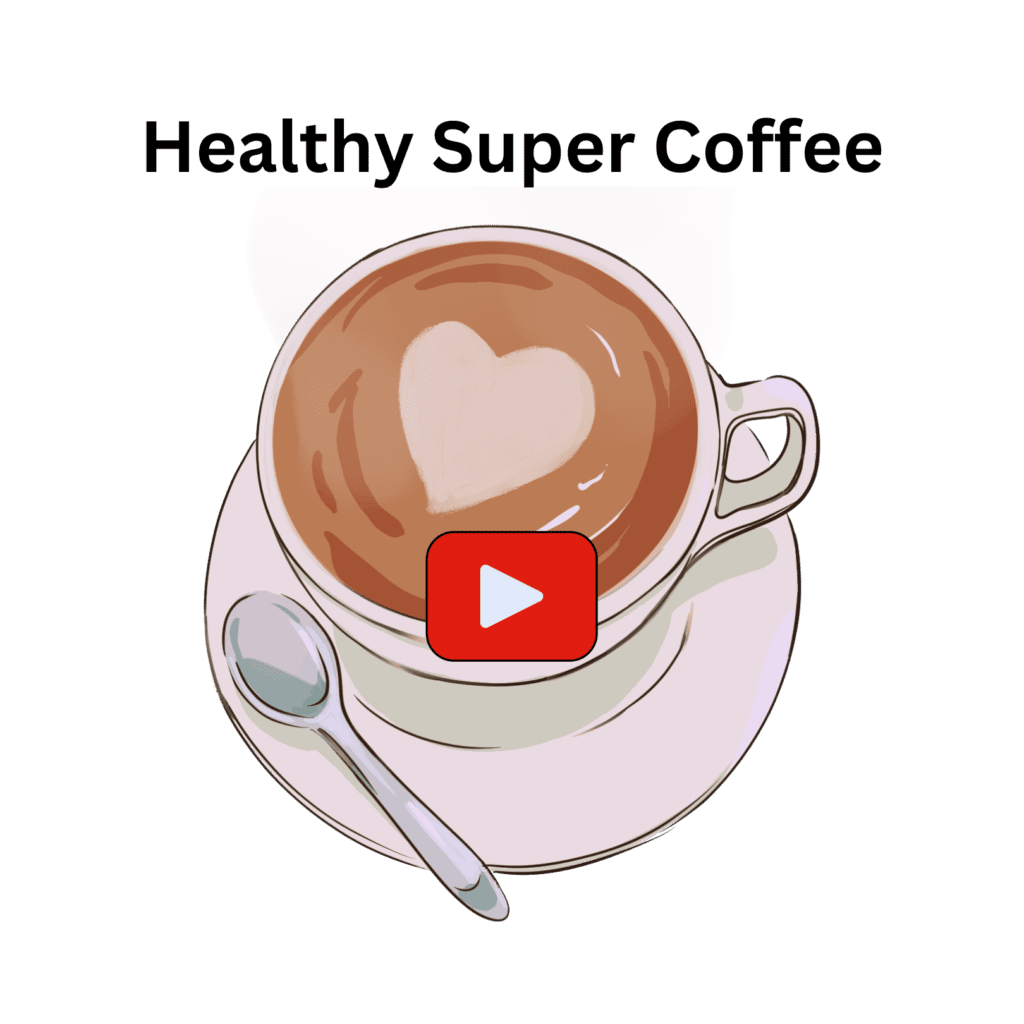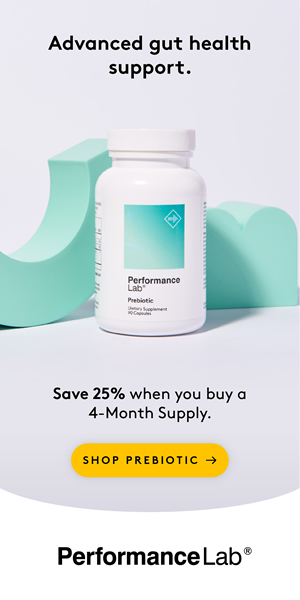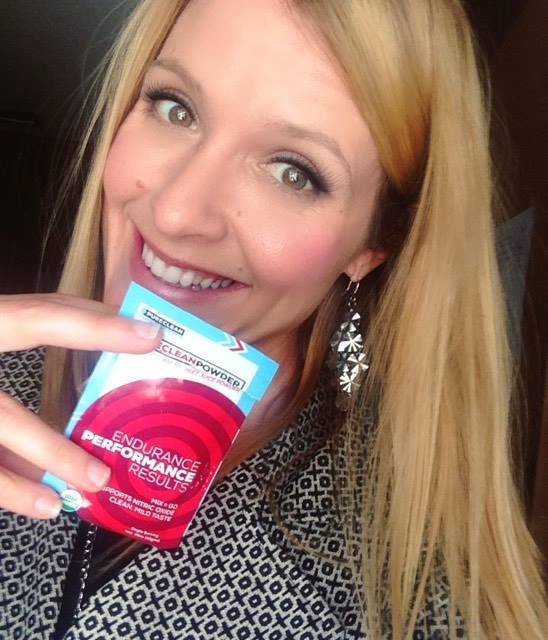
Stop Cancer: 10 Worst Foods To Cut Out Of Your Diet
Today, we’re diving into a topic that’s both crucial and fascinating – the relationship between diet and cancer.
Now, let’s talk about cancer. It’s a word that often brings a sense of fear and uncertainty.
Cancer is a complex and multifaceted disease, influenced by a myriad of factors including genetics, environment, lifestyle, and yes, diet.
While it’s important to remember that no single food is a direct cause of cancer, research shows that our dietary choices can play a significant role in increasing or decreasing our risk.
Now, we’re not here to scare you into a diet overhaul; instead, we aim to empower you with knowledge.
We’ll be highlighting ten foods that studies have linked to an increased risk of cancer.
But don’t worry, it’s not all doom and gloom! You’ll also learn healthier alternatives to these foods, so you can make informed choices about what you eat.
Remember, knowledge is power, especially when it comes to your health.
So, let’s get started on this journey of understanding and prevention.
Let’s dive into our countdown of the top ten foods to cut out of your diet to help reduce your cancer risk!
10. Foods in Plastic Containers with BPA:
Starting our countdown at number 10, we have something a bit different – it’s not a food, but it’s definitely worth mentioning in our list: Foods stored in plastic containers with BPA.
Now, you might be wondering, why are we talking about containers in a conversation about diet and cancer?
Well, it turns out that the containers you store your food in can be just as important as the food itself.
BPA, or Bisphenol A, is a chemical commonly found in many plastic products, including food containers and water bottles.
The trouble with BPA is that it can leach into the food or beverages stored in these containers, especially when they’re heated or scratched.
This is concerning because BPA is known as an endocrine disruptor.
This means it can mimic your body’s hormones, particularly estrogen, and potentially disrupt your body’s normal hormonal functions.
You might think, ‘Okay, but how does this relate to cancer?’ Well, here’s the deal: Hormones, especially estrogen, play a significant role in the development and growth of certain types of cancer, such as breast and prostate cancer.
By disrupting normal hormone levels, BPA can potentially increase the risk of such cancers.
The World Health Organization and other health bodies have expressed concerns about BPA’s potential health effects, though more research is needed to fully understand its impact.
However, when it comes to your health, it’s better to be safe than sorry. So, what can you do?
A better choice is to store your food in glass or BPA-free plastic containers.
Glass is non-reactive and doesn’t release any chemicals into your food, making it a safe and sustainable option.
If you prefer plastic, look for BPA-free labels. These containers are made without Bisphenol A and are a safer alternative for food storage.
By making this simple switch, you’re not just keeping your hormones in a happier balance; you’re also taking a proactive step in reducing your potential cancer risk.
Plus, it’s a move that’s good for the environment too!
9. Highly Salted, Pickled, or Smoked Foods:
Moving on to number 9, we delve into a group of foods that are often hard to resist – highly salted, pickled, or smoked foods.
There’s no denying their appeal; these foods pack a punch in terms of flavor and can be a real treat for your taste buds.
However, when it comes to your health, particularly your cancer risk, they may not be the best choice. Let’s break down why.
Firstly, these foods are typically high in salt.
While salt is essential for your body in small amounts, excessive salt intake is a different story.
High salt levels have been linked to an increased risk of certain types of cancer, particularly stomach cancer.
The World Health Organization has highlighted the risks associated with high salt intake, and reducing salt consumption is a recommended strategy for cancer prevention.
But it’s not just the salt. Many of these foods also contain preservatives, like nitrates and nitrites, which help them stay fresh longer.
These preservatives, when consumed in large amounts, can form compounds in the body that are potentially carcinogenic.
Smoked foods, additionally, contain polycyclic aromatic hydrocarbons (PAHs), which form during the smoking process and have been linked to an increased risk of cancer.
So, what are the alternatives?
Luckily, there are plenty of ways to enjoy similar flavors without the added risk. For starters, try using fresh or frozen vegetables.
They are not only healthier but can be seasoned and prepared in a variety of delicious ways. If you’re a fan of pickled foods, consider making your own at home.
Homemade pickles can be made with less salt, and you have complete control over the ingredients used, ensuring they’re free from harmful preservatives.
Another tip is to experiment with herbs and spices.
Many spices can mimic the flavor that you get from high salt or smoked foods without the health risks.
For instance, using smoked paprika can give you that smoky flavor without needing to actually smoke the food.
8. Artificial Sweeteners and Additives:
At number 8 on our list, we’re focusing on a category that’s often found lurking in our food and drinks without us even realizing it – artificial sweeteners and additives.
Common examples include aspartame, commonly used in diet sodas, and MSG (monosodium glutamate), a flavor enhancer used in various processed and packaged foods.
While they’re popular for adding sweetness or enhancing flavor without extra calories, there’s a growing debate about their long-term impact on health, including cancer risk.
Let’s tackle aspartame first. Found in many ‘diet’ or ‘sugar-free’ products, aspartame has been a subject of controversy for years.
Some studies have raised concerns about its potential carcinogenic effects, but the results are not conclusive.
For example, a study by the Ramazzini Institute in Italy suggested a possible link to cancer, but these findings have been disputed by other experts and health authorities due to methodological concerns.
Moving on to MSG, this flavor enhancer is commonly associated with Asian cuisines but is also widespread in processed snacks, soups, and ready meals.
The debate around MSG and cancer is less pronounced than with aspartame, but it’s still a subject of scrutiny.
Some animal studies have suggested potential harmful effects, but there is no clear evidence linking MSG to cancer in humans.
Given this uncertainty, you might be wondering, ‘Should I avoid these substances altogether?’
While the direct link between these additives and cancer remains a grey area, adopting a ‘better safe than sorry’ approach can be wise.
This doesn’t mean you have to give up on sweet flavors or tasty foods.
There are plenty of natural alternatives that can be used without the potential risks.
For sweetness, consider natural sweeteners like stevia, honey, or maple syrup.
These options can satisfy your sweet tooth without the added chemicals.
For enhancing flavor, turn to the world of spices and herbs.
Natural spices can provide a depth of flavor that often surpasses that of artificial additives.
For example, turmeric, ginger, and cinnamon are not only flavorful but also come with their own health benefits.
7. Trans Fats:
Coming in at number 7 on our list are trans fats, a type of fat that has been making headlines for all the wrong reasons.
You’ll find trans fats in various foods, like certain types of margarine, fried foods, and a host of processed snacks and baked goods.
But why exactly are trans fats a concern when it comes to cancer risk?
Trans fats are created through an industrial process that adds hydrogen to liquid vegetable oils, making them more solid.
This process, known as hydrogenation, is used to extend the shelf life of foods and give them a desirable texture.
However, the downside to trans fats is significant.
Numerous studies have linked them to an increased risk of various health issues, including heart disease, inflammation, and yes, cancer.
When it comes to cancer, particularly breast cancer, the evidence is especially concerning.
For instance, a study published in the journal ‘BMJ’ found that higher intakes of trans fats were associated with an increased risk of breast cancer among postmenopausal women.
So, what can you do to reduce your intake of trans fats and potentially lower your cancer risk?
The key is to be mindful of the types of fats you’re consuming. Instead of reaching for foods containing trans fats, choose foods rich in healthy fats.
These include avocados, which are not only delicious but also packed with heart-healthy monounsaturated fats, and nuts like almonds, walnuts, and cashews, which are great sources of both monounsaturated and polyunsaturated fats.
These types of fats are beneficial for your health and are not associated with an increased cancer risk.
Another tip is to check food labels when shopping. In many countries, trans fats must be listed on nutritional labels, so you can make informed decisions about what you’re eating.
Look for terms like ‘partially hydrogenated oils’ – this is a clear indicator that the product contains trans fats.
6. Excessive Red Meat:
At number 6, we’re looking at a dietary staple for many: red meat.
While a juicy steak or a hearty burger can be a mouth-watering treat, there’s growing evidence that excessive consumption of red meat is linked to an increased risk of certain types of cancer, particularly colorectal cancer.
Red meat, which includes beef, lamb, and pork, is a rich source of protein and essential nutrients like iron and vitamin B12.
However, when consumed in large amounts, it poses health risks.
Research has shown a significant link between red meat and an increased risk of colorectal cancer.
For example, a major study published in the International Journal of Cancer found that high red meat intake was associated with a higher risk of developing colorectal cancer.
So, why does red meat have this effect?
One reason is the presence of certain chemicals formed during the cooking process, especially when meat is cooked at high temperatures or until well-done.
These chemicals, such as heterocyclic amines (HCAs) and polycyclic aromatic hydrocarbons (PAHs), are known carcinogens.
Another factor is the high iron content in red meat, specifically a type called heme iron, which has been suggested to promote the formation of potentially carcinogenic compounds in the body.
Now, this doesn’t mean you need to completely eliminate red meat from your diet. It’s all about balance and moderation.
One way to reduce your risk is to limit your red meat intake.
The American Cancer Society, for instance, recommends choosing smaller portions and eating red meat less frequently.
Another tip is to opt for leaner cuts of meat, which have less fat and may reduce the formation of harmful chemicals during cooking.
Moreover, exploring plant-based proteins can be both a healthy and delicious alternative.
Foods like beans, lentils, tofu, and tempeh are excellent sources of protein and are packed with other nutrients while being low in harmful substances linked to cancer.
Incorporating these into your diet not only diversifies your meal choices but also contributes to a lower cancer risk.
5. Refined Carbohydrates:
Halfway through our list at number 5, we encounter refined carbohydrates.
These are often the go-to comfort foods for many – think white bread, pastries, and most types of commercially available snacks.
While undeniably tasty and satisfying, these foods might not be the best choice if you’re concerned about cancer risk.
Refined carbohydrates are processed foods where the natural fiber is removed during the refining process.
This includes foods made with white flour, like many breads, pastries, and snacks.
The issue with refined carbs is their effect on the body’s insulin levels. When you consume these foods, your body quickly converts them into glucose, leading to a spike in blood sugar.
This, in turn, causes a surge in insulin, a hormone that regulates blood sugar levels.
So, why is this a concern?
Research has shown that high insulin levels and related insulin-like growth factors may be associated with some types of cancer, such as breast and colorectal cancers.
These growth factors can potentially ‘feed’ cancer cells, helping them grow and spread.
For instance, a study in the journal ‘Cancer Epidemiology, Biomarkers & Prevention’ found a link between high glycemic load diets (which are high in refined carbs) and increased lung cancer risk.
But it’s not all bad news – there are healthier alternatives that can satisfy your carb cravings without these risks.
Whole grains and fiber-rich foods are excellent options. Unlike refined carbs, whole grains are packed with natural fiber, vitamins, and minerals.
This means they’re digested slower, leading to a more gradual increase in blood sugar and insulin levels.
Foods like whole wheat bread, brown rice, quinoa, and oats are not only delicious but also healthier.
Additionally, fiber-rich foods have been shown to reduce cancer risk.
They help in maintaining a healthy digestive system and can bind to potential carcinogens, removing them from the body.
Foods like fruits, vegetables, legumes, and whole grains are all great sources of dietary fiber.
4. Alcohol:
Sliding into number 4 on our list is a substance that’s often a staple in social gatherings and celebrations: alcohol.
Whether it’s wine, beer, or spirits, alcohol is consumed by many without much thought about its potential long-term effects.
However, when it comes to cancer risk, regular consumption of alcohol is a significant factor to consider.
Alcohol consumption has been linked to an increased risk of several types of cancer, including breast, liver, colon, and throat cancer, among others.
The reason behind this is multifaceted. Alcohol metabolizes in the body to acetaldehyde, a toxic chemical and a probable human carcinogen.
Acetaldehyde can damage DNA and proteins, which is a key process in the development of cancer.
Additionally, alcohol can also impair the body’s ability to absorb and use various nutrients, like vitamin A, folate, and vitamin C, which are vital for preventing cell damage.
The more alcohol a person drinks over time, the higher their risk of developing alcohol-associated cancer.
According to research, even moderate alcohol consumption is not risk-free. For instance, a study in the ‘British Journal of Cancer’ found that even low levels of drinking could increase the risk of certain cancers.
So, what can you do to reduce this risk?
The most effective way is to cut down on your alcohol intake or avoid it altogether.
Choosing non-alcoholic drinks is not just a healthier choice for reducing cancer risk but also beneficial for overall health.
There are many enjoyable and sophisticated non-alcoholic options available these days, from mocktails to non-alcoholic wines and beers.
If you do choose to drink, it’s recommended to limit your intake.
The American Cancer Society suggests that men should have no more than two drinks per day and no more than one for women.
Remember, a ‘drink’ is defined as 12 ounces of beer, 5 ounces of wine, or 1.5 ounces of spirits.
3. Overcooked or Burnt Foods:
Number 3 on our list addresses a cooking style that might be surprisingly increasing your cancer risk: overcooked or burnt foods.
We often relish the charred, crispy edges on grilled meats or the crunch of over-toasted bread, but these cooking methods can have hidden health risks.
As we’ve discussed earlier, when foods, particularly meats, are cooked at high temperatures or for extended periods, they can form harmful compounds.
Two of these are heterocyclic amines (HCAs) and polycyclic aromatic hydrocarbons (PAHs). HCAs form when meats are cooked at high temperatures, like grilling or pan-frying, while PAHs are created when fat drips onto an open flame, causing smoke which then adheres to the surface of the meat.
These compounds have been shown to cause changes in DNA that may increase the risk of cancer.
The concern isn’t limited to meats, though. Foods like bread or potatoes, when over-toasted or overcooked to the point of burning, can produce acrylamide, another potentially harmful chemical.
Acrylamide forms in carbohydrate-rich foods during high-temperature cooking, like frying, roasting, or baking.
Studies, including research published in the ‘Journal of Agricultural and Food Chemistry,’ have linked dietary acrylamide exposure to an increased risk of several types of cancer.
So, how can you reduce your exposure to these harmful compounds? The key is in the cooking method.
Cooking foods at lower temperatures and avoiding burning them is a smarter choice. For instance, you can try steaming, boiling, or stewing, which don’t typically create these harmful chemicals.
If you’re grilling, marinating meats beforehand can not only add flavor but also help reduce the formation of HCAs and PAHs.
Additionally, regularly flipping meat while cooking and removing charred portions can also minimize risk.
Another tip is to be mindful when toasting bread or roasting potatoes – aim for a golden yellow color rather than a dark brown or black.
Not only does this reduce the formation of harmful compounds, but it also preserves more of the natural nutrients in the food.
2. Sugary Drinks:
Coming in at number 2 on our list are sugary drinks, a category that includes sodas, sweetened teas, energy drinks, and many types of flavored beverages.
These drinks are incredibly popular worldwide, but their impact on health, particularly in terms of cancer risk, is a growing concern.
The primary issue with sugary drinks is their high sugar content.
Consuming these beverages regularly can lead to weight gain and obesity, which are established risk factors for various types of cancer, including breast, kidney, colorectal, and esophageal cancers.
Obesity can cause changes in the body like chronic inflammation and hormone imbalances, which may in turn contribute to cancer development.
Furthermore, the high sugar content in these drinks can lead to spikes in blood sugar and insulin levels, similar to the effects of consuming refined carbohydrates.
As previously discussed, these insulin spikes can potentially aid in the growth and spread of cancer cells.
For instance, a study in the ‘American Journal of Clinical Nutrition’ found that higher consumption of sugary drinks was associated with an increased risk of certain types of cancer.
So, what are healthier alternatives to these sugary temptations?
The simplest and most beneficial swap is plain water.
Water is essential for all bodily functions and helps in maintaining a healthy weight. If you find plain water too bland, you can add a splash of natural flavor with slices of fruits like lemon, lime, or cucumber, or even a few sprigs of mint.
Herbal teas are another excellent option. They come in a variety of flavors, are naturally free of calories, and can be enjoyed hot or cold.
Not only are they a refreshing alternative, but many herbal teas also offer health benefits, such as antioxidant properties.
Lastly, naturally flavored water, like infused or sparkling water with natural flavors, can satisfy your craving for something fizzy without the added sugar.
Just be sure to check the labels to ensure they don’t contain added sugars or artificial sweeteners.
1. Processed Meats:
And now, we’ve reached the top spot on our list, at number 1: Processed meats. This category includes favorites like bacon, sausage, hot dogs, and deli meats.
Despite their popularity in many diets around the world, processed meats come with significant health concerns, particularly regarding cancer risk.
The main issue with processed meats lies in their content of nitrates and nitrites, which are used as preservatives to extend shelf life and enhance color and flavor.
When consumed, these substances can form nitrosamines in the body, which are known carcinogens.
The World Health Organization has classified processed meats as a Group 1 carcinogen, meaning there is sufficient evidence that they can cause cancer in humans.
The evidence is most compelling for colorectal cancer, but associations with stomach and other cancers have also been observed.
For example, a major study published in ‘The Lancet Oncology’ found that the consumption of processed meat is linked to an increased risk of colorectal cancer.
The International Agency for Research on Cancer, part of the WHO, estimates that every 50-gram portion of processed meat eaten daily increases the risk of colorectal cancer by about 18%.
So, what can you do to mitigate this risk? A great place to start is by reducing your intake of processed meats and instead opting for fresher alternatives.
Fresh, lean cuts of meat are a healthier option if you’re not ready to give up meat entirely. These cuts contain fewer harmful preservatives and are generally lower in fat.
Another excellent strategy is to explore the world of plant-based proteins.
Foods like beans, lentils, tofu, and tempeh not only provide the protein you need but also come packed with other health benefits and are free from the harmful substances found in processed meats.
And there you have it, folks – our comprehensive rundown of the top ten foods and habits to consider adjusting in your quest to reduce your cancer risk.
Remember, it’s not about completely banishing these items from your life. Instead, it’s about being more mindful and making informed choices about what you put on your plate.
And let’s not forget, leading a healthy lifestyle goes beyond just diet.
Regular physical activity, maintaining a healthy weight, and getting routine medical check-ups play a pivotal role in cancer prevention. It’s all about creating a balance that works for you and your body.
Now, we’d love to hear from you! What are your thoughts on these foods and tips?
Do you have any personal experiences or additional suggestions to share?
Maybe you have a favorite healthy recipe or a lifestyle tip that’s made a big difference for you?
Drop your thoughts, stories, and questions in the comments section below – let’s keep the conversation going and learn from each other!
